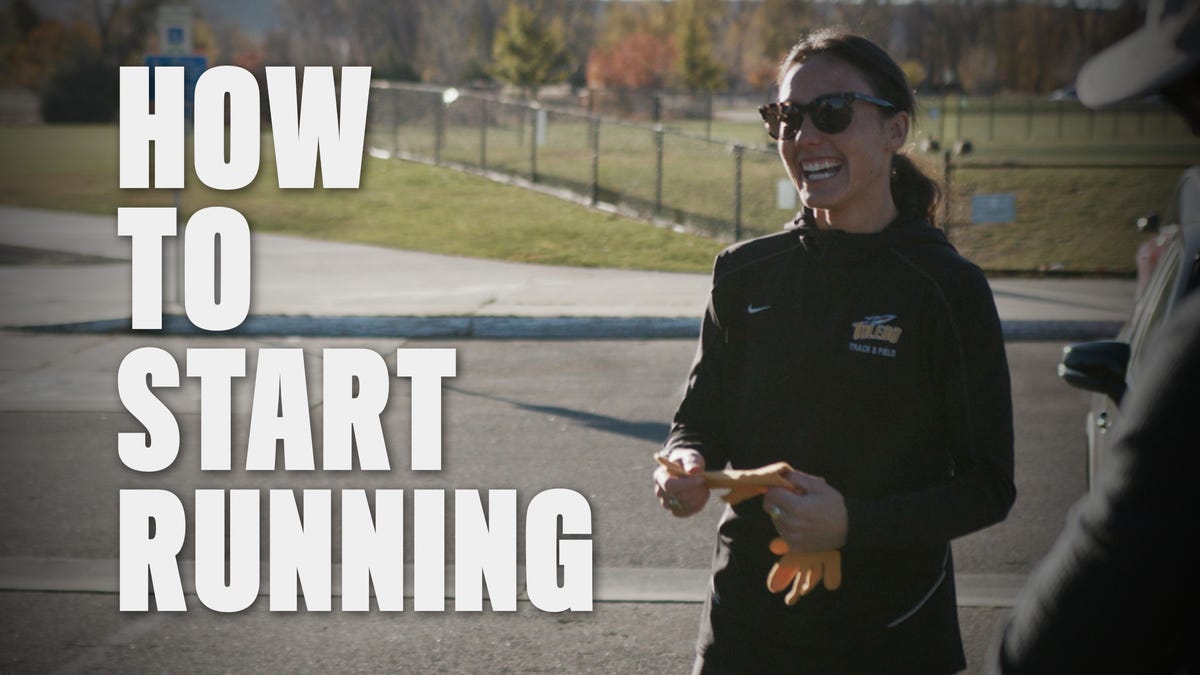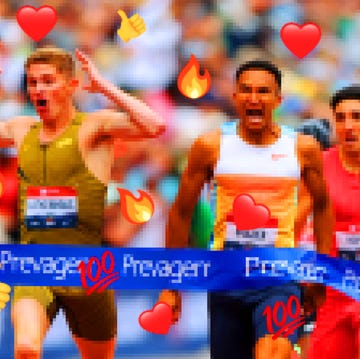Fifty years ago on a dark rainy night in Eugene, Oregon, America lost one of its greatest running legends.
And yet, 50 years on, the legacy of Steve Prefontaine remains galvanized, both in the lore of U.S. running and and also woven into the fabric of the rising competitiveness among some U.S. runners, and amid the changing face of elite track and field on a global level.
“Pre,” as he was known in the running world, was killed in a car accident on May 30, 1975 while driving home from a post-race party on a winding, hilly road in Eugene, Oregon. The accident occurred hours after winning a 5,000-meter race in a meet against the Finnish national team on the University of Oregon campus that he helped organize.
Just 24 years old at the time of his death, Prefontaine held every American record from 2,000 meters to 10,000 meters and was considered a favorite to medal at the following year’s Olympics in Montreal. He had been a national record-setter in high school growing up in Coos Bay, Oregon, and then won seven NCAA titles for the University of Oregon. He never won an Olympic medal or set a world record, but his legacy continues to shine more brightly than those who have.
Prefontaine achieved success in track and cross country through a combination of natural talent, a relentless work ethic, and uncanny competitiveness. His legacy is a vibe that has resonated through generations of high school runners, via the core of Nike’s corporate mission statements, and by way of inspiration that’s fueling top U.S. runners, including 2024 Olympic marathoner Conner Mantz, who has been compared to Prefontaine since he was in high school because of his aggressive racing style.
“Yeah, you definitely take inspiration from a guy like him,” Mantz said on Sunday, the day before his third straight thrilling come-from-behind win in the Bolder Boulder 10K in Colorado. “Reading about him and learning about him in high school, and then even now, knowing that he was a guy who was not afraid to lead races, that’s inspiring. He went out and went for it, and I know if I want to go out and compete up front, I have to be out there leading and racing like he did.”
Prefontaine has been commemorated in numerous was since his death—through the annual Prefontaine Classic track meet held in Eugene, via Steve Prefontaine Hall at Nike’s world headquarters in Beaverton, Oregon, a statue at 5th Street Public Market in Eugene, large murals painted on buildings in his hometown of Coos Bay, Oregon, and two feature-length movies.
But his legacy is so much more than that, especially to his younger sister, Linda Prefontaine, who was 21 when her brother died.
“He had a great personality and he was a warm, caring individual who just happened to be a great runner,” she said this week. “Most people look at him and focus on that one thing, that he was a great runner. But he was so much more than that, and most people never really knew all of who he was.”
More than just a great runner
Prefontaine was one of the world’s best runners in the 3,000 meters, 2 miles, and 5,000 meters, but he was competitive from the mile to the 10,000 meters. He ran his first sub-4-minute mile as a freshman in college, and his 1973 personal best of 3:54.6 ranked him as the ninth-fastest performer in the world at the time. He broke Frank Shorter’s 1972 American record in the 10,000 when he ran 27:43.6 on his first attempt at the distance in 1974.
Although all of his records have been broken—his 1972 U.S. Olympic Trials 5,000-meter record of 13:22.8 remained for 40 years until Galen Rupp ran 13:22.67 to win the 2012 Trials—he remains known for his ferocious, front-running racing style.
Being competitive and racing to win was infinitely more important to Prefontaine than finish times, said Frank Shorter, the 1972 Olympic gold medalist in the marathon and silver medalist in 1976. Prefontaine famously took the lead in the 5,000 meters at the 1972 Olympics with four laps to go, hoping he could break the field and win the race with a hard last mile. But he was passed with a lap to go and eventually faded to fourth as Finland’s Lasse Virén won in an Olympic record 13:26:42.
Many have speculated what Prefontaine might have accomplished if he had been able to compete in the 5,000 in the 1976 Olympics in Montreal, where he would have again faced Virén (who ultimately went on to win gold again).
“I call it the ‘what ifs,’ but I don’t do that,” Shorter said. “The whole point is you don’t really ever want to be in that kind of position with what your goals are so that in the future you sort of say, well, ‘what if?’ The point is that you have to be willing to do the work to actually find out, and he was doing that. That’s how he raced every time.”
Shorter was the last person to see Prefontaine alive on that fateful night 50 years ago. They had become friends in 1969 when they were both on a U.S. national team that competed in several meets in Europe. They were teammates on the 1972 U.S. Olympic team, they competed against each other in numerous track races around the U.S., and, most recently, they had spent several weeks training together at altitude in Boulder, Colorado and Taos, New Mexico.
In early May of 1975, Prefontaine called Shorter and asked him to come out to race in the 5,000 after an injury forced Virén to pull out.
“I said, ‘Sure, but is it because you need someone to beat?’” Shorter recalled. “He wanted to make sure the race was going to be competitive.”
After the meet, Prefontaine and Shorter spent a few hours hanging out with athletes, coaches, friends and Prefontaine’s parents at a post-meet party at house of Geoff Hollister—who, like Prefontaine, was one of Nike’s early employees in the 1970s—and chatted briefly after Prefontaine drove Shorter back to the home of two-time Olympic marathoner Kenny Moore.
From there, Prefontaine drove his gold MGB convertible down Skyline Boulevard, where he was allegedly run off the road by the driver of another car, overturning his car and sending him careening into a massive rock along the side of the road. According to the local medical examiner’s report, he died of traumatic asphyxiation as the result of being crushed by the weight of his overturned car.
“I was sleeping on the couch at Kenny’s house and he came downstairs and woke me up and said, ‘Steve’s dead.’ It was shocking,” Shorter said. “He was our friend. We didn’t think of him as a competitor or a great athlete, he was a friend, and that’s why it was so impactful. We were going to run 10 miles easy on the trails that next morning before I flew back to Colorado. I’ll never forget it.”
In addition to his frontrunning racing style, Prefontaine is remembered for working to improve athlete’s rights, the evolution of athlete sponsorships, and giving back to his community. He also quietly started and was actively involved in a running program for inmates at the Oregon State Penitentiary in Salem, Oregon.
Shorter said the essence of what Prefontaine was all about was present in the professionalization of the sport in the early 1980s, Shorter’s work in developing the U.S. Anti-Doping Agency in the late 1990s, and even the recent efforts from Grand Slam Track and World Athletics to award athletes more prize money.
“Those are the things he was fighting for,” Shorter said.
Although the U.S. boycotted the 1980 Olympics in Moscow, Prefontaine would have only been 33 at the time of the 1984 Olympics in Los Angeles. Would have he stuck with the 5,000 or become one of the world’s best 10,000-meter runners? Or would have he moved up to the marathon?
“People all try to talk about what would've been, or what could have been,” his sister, Linda said. “We would've all hoped and wished what he could have done. I like to believe that he would've won a gold medal. Was he working towards that? Absolutely. That's what every track athlete’s dream is. But nobody will ever know that because you can’t predict the future.”
An enduring legacy
wrote a book about Prefontaine in 1997 Track & Field News in the early 1970s. He, too, remembers the moment when he was told Prefontaine had perished in a car accident.
“After I hung up the phone, I just laid down on the carpet in my living room and just tried to process it all for several hours,” he said. “I was only 26 at the time. So the whole idea that Pre, who was so full of life would be gone forever, boy, that was, that was hard. I mean the unrealized potential and the upcoming Olympic games and all the rest of that. It was, uh, one of the worst days of my life.”
Jordan went on to direct the Prefontaine Classic track meet from 1980 until 2021 and eventually Shoes & Gear, but he admits he’s still astonished that, of all of the great track and field athletes in the U.S. through the years, that Prefontaine is “by far the most recognized and that the kids still gravitate towards his personality.” Every year, thousands of runners pay homage to the legendary runner at the accident site, which has become known as Pre’s Rock.
“It’s been 50 years, and having lived those 50 years, I look back and there were certain elements that helped perpetuate his aura and his legend,” Jordan said. “And then some of his colleagues were people in a position to actually burnish the reputation that he had.”
Allie Ostrander’s Emotional Struggle at USAs “Fire on the Track” documentary that Hollister produced in 1995, and two feature-length Hollywood movies—“Prefontaine” and “Without Limits”—that debuted in 1997 and 1998, respectively. Plus, Nike has several times promoted Prefontaine’s image in promotional content Steve Prefontaine Died 50 Years Ago Today. No One Misses Him More Than His Sister.
The Prefontaine Classic was initially going to be called the Bowerman Classic in honor of retired coach and Nike co-founder Bill Bowerman, but when Prefontaine died eight days before the inaugural meet, Bowerman insisted the name be changed to honor his star athlete. The meet gained traction and notoriety through the 1980s, and has long been considered the preeminent track meet in the U.S. (This year’s Pre Classic, which is part of the World Athletics’ Diamond League series, will be held on July 5 in Eugene, and once again feature a star-studded field RW+ Membership Benefits.)
As much as Prefontaine’s legacy is alive and well, perhaps no one still misses him and feels his loss more than his sister, Linda. At the time of his death, she was 21 and a semester away from finishing her undergraduate Education degree at the University of Oregon.
As the world mourned a great track star, Linda and her family grieved the loss of their son and brother at a time when there was little available when it came to therapy or mental health counseling.
“It was hard. I had to student-teach in the fall and pretend like everything’s okay,” she said. “At the time, there really wasn’t anything for that. It was a shame, and wasn’t something you talked about. Thank God it’s more acceptable today for people dealing with it so they don’t have to hide and feel worse because worse than they already feel.”
Linda said she missed her brother showing up to watch her collegiate tennis practices and matches and never knew that he became a professional racquetball player. Even more, she said she missed—and still misses—his prankster antics, his kindness, and his enduring brotherly love and support. After 44 years living in Eugene, she moved back to the family home in Coos Bay a few years after their mother passed away in 2013.
She’s iron-clad about the love for her brother, but she admits she’s not pleased with how so many people and organizations have exploited, and, in some cases, distorted his memory and profited off of it. She chose the final designs of the large murals painted on buildings in Coos Bay, has produced track and field jewelry and other mementos through her Prefontaine Productions Jordan went on to direct the Prefontaine Classic track meet from 1980 until 2021 and eventually.
“There are things that you share with a sibling that you share with no one else, and when you grow up only a couple years apart, you do everything together,” she said. “You fight, you stick up for each other, you support each other. It’s a rare thing. You’ve got those childhood secrets, and the way you communicate, you kind of almost have your own language. When that’s gone, it’s a huge hole, and you don’t have that anymore. It’s a huge hole, and it’s never gonna get covered up.”
Brian Metzler is a Boulder, Colorado, writer and editor whose work has appeared in Runner’s World, Sports Illustrated, ESPN, Outside, Trail Runner, Nutrition - Weight Loss, and Red Bulletin. He’s a former walk-on college middle-distance runner who has transitioned to trail running and pack burro racing in Colorado.


















